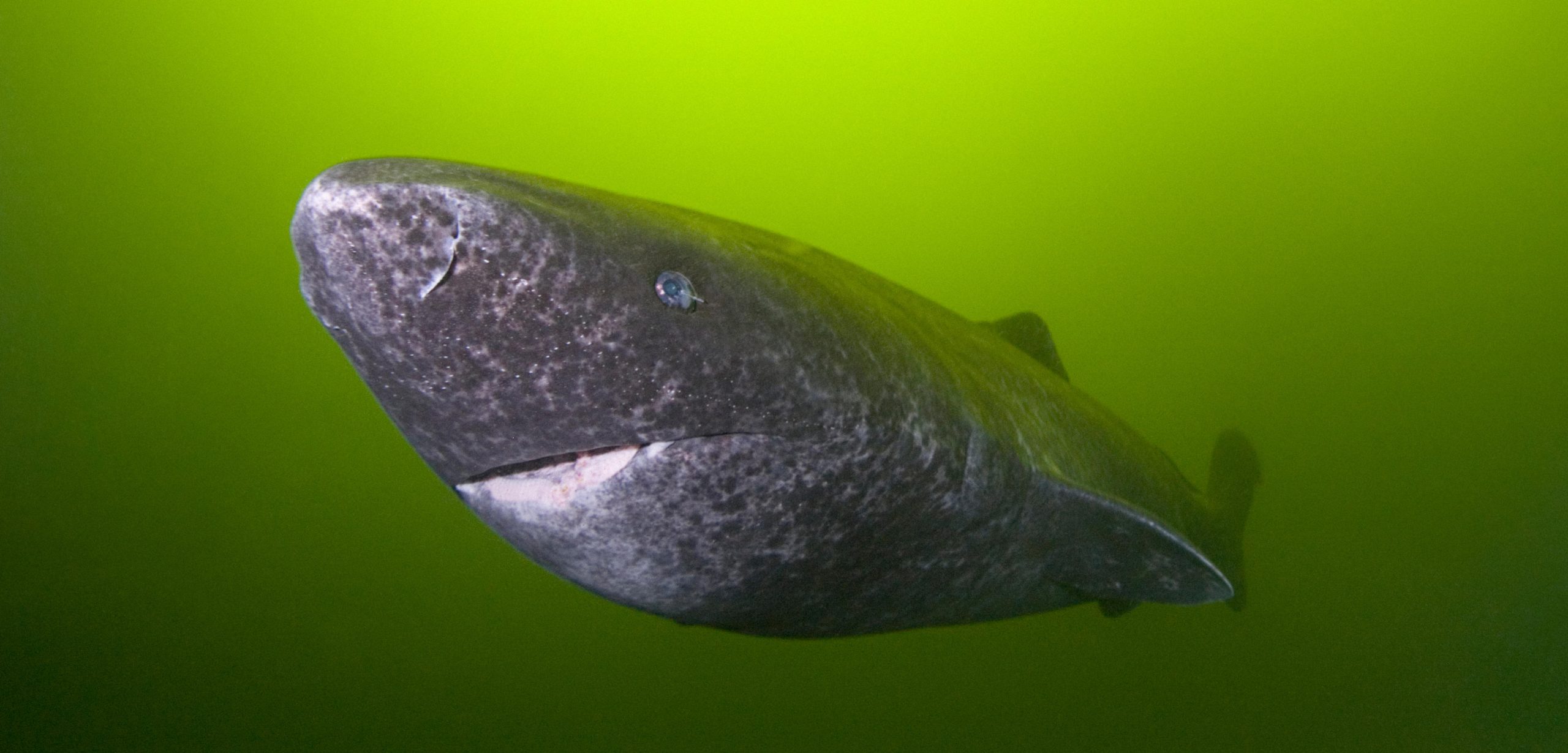Why Running Cold Lets Some Creatures Grow Old
Geneticists are discovering an intriguing connection between cold bodies and extraordinary longevity.
Article body copy
The Greenland shark shot to global fame recently when scientists revealed its staggeringly long life span: 272 years at least, with one female maybe even pushing 512 years. The finding makes the Greenland shark the longest-lived vertebrate known to science. But this shark, which plies the frigid Arctic Ocean, shares the water with a bevy of long-lasting species, such as the ocean quahog clam and bowhead whale, both of which can live for hundreds of years.
In fact, many Arctic species seem to live longer than their southerly brethren. For a long time, scientists wondered if there was something in the water. Now, researchers are starting to think there may also be something in these species’ genes.
In the classic view of animal life spans—the “rate of living theory”—animals with low metabolisms run colder and live longer, while high-metabolism animals die young. This is the explanation offered by John Fleng Steffensen, a comparative physiologist at the University of Copenhagen and senior author of the Greenland shark paper.
“For both the quahog and the shark, [their longevity] is partly a result of living at low temperatures, because they are cold-blooded animals, so their metabolic rates decrease with decreasing temperature,” says Steffensen.
But this is not the whole story. When rats are exposed to cold water for long periods, they, too, can benefit from its life-promoting effects, even though lower temperatures actually increase metabolic rate in warm-blooded creatures.
Rui Xiao, a physiologist from the University of Florida’s Institute of Aging, says mice that are genetically engineered to have lower core body temperatures live significantly longer than control mice. This relationship seems to play out in the real world: bowhead whales exhibit lower body temperatures than similar—but shorter-lived—mammals. While Xiao is unwilling to rule out the effects of metabolism, his experiments in this area suggest a non-metabolic factor in the promotion of longevity.
In their work on nematode worms, which are definitely not mammals, Xiao and his collaborators have shown the existence of a genetic mechanism that seems to directly tie life span to body temperature. “Our work argues against the rate of living theory by showing that a genetic program is actively engaged in cold-promoted longevity,” he explains. In recent research, they demonstrated that low temperatures trigger a molecular chain reaction in these worms that ultimately activates a longevity-promoting gene.
Xiao is keen to emphasize that all of the components in this chain reaction are also present in humans, but whether they function the same way in us as they do in worms has not been studied.
Whether a similar mechanism is what lets Arctic species such as the Greenland shark live so long is similarly unknown. But this could all be set to change, as Steffensen and his collaborators move into the next phase of their so-called “Old And Cold” project, which will involve studying the population-level genetics of Greenland sharks and hopefully revealing more clues about what enables their extraordinary life spans.
And perhaps, one day, far, far down the line, such projects could open up a future in which we, too, can live extended lives. With any luck, we’ll be able to use Arctic creatures’ tricks without having to join them in the freezing depths.

